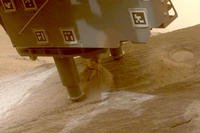F-35 Joint Strike Fighter's long term operating costs are once again at the forefront of the debate about how much the stealthy swiss army knife will cost. Just yesterday, Frank Kendall, acting undersecretary of defense for acquisition, technology and logistics (AT&L) told lawmakers that while acquisition costs are coming under control the real issue is going to be the price tag associated with keeping the jets flying over the decades.
"We're doign everything we can to drive down the cost of the Joint Strike Fighter,"said Kendall during his March 29 Senate Armed Services Committee hearing to be confirmed as full-time undersecretary of defense for AT&L.
"I do think that the strike fighter is getting under control, we're attacking the producting costs by putting stong incentives on the contractor to control cost and to get the changes that have to be made cut in quickly. Now we're focusing on the sustainment costs which are larger actually than the production costs, we've made some progress there this year in some areas but we've slipped in some areas as well. That's where we think the greatest potential [for savings] is. [Deputy Defense Secretary Ashton Carter] testified a year ago about getting large fractions of that cost down and I think we can approach that. So I've set a goal for us to accomplish that."
Now Reuters is reporting that the Pentagon's Cost Assessment and Program Evaluation (CAPE) office estimates that it will cost $1.45 trillion over the next 50-plus years to buy and operate the JSF fleet. Wow.
Apparently, much of this is due to the cost of inflation over the coming decades:
While inflation accounts for more than one-third of the projected F-35 operating costs, military officials and industry executives were quick to point out that it is nearly impossible to predict inflation over the next half-century.They also argue that no other weapons program's costs have been calculated over such a long period, and that even shorter-term cost projections for other aircraft do not include the cost of modernization programs and upgrades.
The new cost estimate reflects the Pentagon's proposal to postpone orders for 179 planes for five years, a move that U.S. official say will save $15.1 billion through 2017, and should avert costly retrofits if further problems arise during testing of the new fighter, which is only about 20 percent complete.
The Pentagon's newest numbers say that the jets will cost $112.5 million, plus $22 million for the engine, apiece to buy in 2012 dollars (that figure includes the cost of R&D work), according to Reuters. That's $135 million per plane, plus an additional $26 million for the engines when adjusted for inflation.
Here's Reuters breakdown of that massive number along with several competing estimates about the F-35's cost -- notice how the Pentagon's official cost psychics (CAPE), the GAO and the F-35 program office all have different predictions for the F-35 price tag:
The new estimate, based on calculations made by the Cost Assessment Program Evaluation (CAPE) office, includes operating and maintenance costs of $1.11 trillion, including inflation, and development and procurement costs of $332 billion.The Government Accountability Office last week projected it would cost $397 billion to develop and buy the planes, up from its earlier forecast of $382 billion.
The Pentagon office that runs the F-35 program office has a lower estimate for lifetime costs, although it is still around $1 trillion, according to two sources familiar with the estimates. Both industry and government have put a huge emphasis on reducing operating costs and keeping the plane affordable.
Remember a couple of years ago when a leaked slide from NAVAIR claimed that the F-35 -- a plane originally sold on the premise that it will offer 5th-generation fighter performance with a low price tag -- would be far more expensive to operate than the Navy and Marine Corps current crop of fighters?
That document claimed the Navy and Marines'F-35C carrier variant and F-35B short Take-off and vertical landing variant JSFs would cost $30,700 per hour to fly versus the $18,900 an hour that the AV-8B Harrier and F/A-18 Hornet cost to fly. Naturally, Lockheed disputed these claims.








